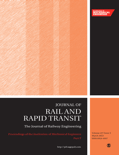
PROCEEDINGS OF THE INSTITUTION OF MECHANICAL ENGINEERS PART F-JOURNAL OF RAIL AND RAPID TRANSIT
Scope & Guideline
Connecting Ideas: Where Mechanical Engineering Meets Transit
Introduction
Aims and Scopes
- Railway Vehicle Dynamics:
Research in this area includes the study of the dynamic behavior of railway vehicles under various operational conditions, focusing on stability, ride comfort, and safety during train operations. - Track and Infrastructure Engineering:
This includes investigations into the design, maintenance, and performance of railway tracks and associated infrastructure, with a focus on improving durability and reliability under operational stresses. - Rail System Safety and Reliability:
The journal publishes studies on the safety assessment of rail systems, including risk analysis, failure prediction, and the development of monitoring technologies to enhance operational safety. - Innovative Technologies and Materials:
This encompasses research on new materials and technologies in railway engineering, such as advanced composites, smart materials, and automation technologies aimed at improving system efficiency and performance. - Environmental Impact and Sustainability:
The journal addresses the environmental aspects of railway systems, including energy efficiency, noise reduction, and the implementation of sustainable practices in rail transport. - Data-Driven Approaches and Machine Learning:
There is a growing emphasis on the use of data analytics, machine learning, and artificial intelligence for predictive maintenance, performance optimization, and fault diagnosis in rail systems.
Trending and Emerging
- Electrification and Alternative Energy Solutions:
There is a notable increase in research focused on electrification of rail systems and the exploration of alternative energy sources, such as hydrogen fuel cells and battery-operated trains, emphasizing sustainability. - Smart Monitoring and Maintenance Technologies:
The rise of IoT (Internet of Things) and machine learning applications for predictive maintenance and real-time monitoring systems indicates a trend toward enhancing operational efficiency and safety. - Advanced Computational Modelling and Simulation Techniques:
Emerging computational methods, including finite element analysis and co-simulation techniques, are increasingly applied to study complex interactions within rail systems, improving design and operational assessments. - Noise and Vibration Mitigation Strategies:
Research aimed at understanding and mitigating noise and vibration in rail systems has gained prominence, driven by regulatory pressures and public concerns regarding environmental impacts. - Safety and Risk Management Innovations:
There is a growing focus on innovative safety technologies and risk management strategies, enhancing the reliability and safety of rail operations.
Declining or Waning
- Conventional Diesel Technologies:
Research related to traditional diesel locomotives and their associated technologies is becoming less prominent as the industry shifts towards electrification and alternative energy sources. - Basic Rail Design and Maintenance Practices:
There seems to be a decline in publications focused on traditional rail design and maintenance practices, likely due to the increasing complexity and innovation in modern rail systems. - Historical and Legacy Systems Analysis:
Papers focusing on the analysis of historical rail systems or legacy infrastructure have decreased as the focus shifts to modern, innovative, and sustainable rail solutions. - General Mechanical Engineering Applications:
While mechanical engineering principles are foundational, studies that focus broadly on mechanical applications without direct relevance to rail systems have seen reduced interest in favor of more specialized research.
Similar Journals
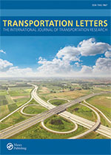
Transportation Letters-The International Journal of Transportation Research
Innovative insights driving the evolution of mobility.Transportation Letters - The International Journal of Transportation Research, published by Taylor & Francis Ltd, is a leading journal dedicated to advancing the field of transportation studies. With an impact factor that reflects its significance within the academic community and a prestigious ranking of Q2 in Transportation, this journal provides a critical forum for the dissemination of innovative research and insights in transportation systems, policies, and technologies. Covering a broad scope of topics from urban mobility to logistics and infrastructure, Transportation Letters serves as an essential resource for researchers, professionals, and students aiming to deepen their understanding of transportation issues facing society today. With over a decade of publication since 2009, the journal has established a solid reputation, ranking 46th out of 141 in Scopus's transportation category, placing it in the 67th percentile. Although it does not operate under an open-access model, it remains committed to accessibility through various subscription options, ensuring that vital research is available to those shaping the future of transportation.
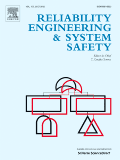
RELIABILITY ENGINEERING & SYSTEM SAFETY
Shaping the Future of Engineering through System Safety.RELIABILITY ENGINEERING & SYSTEM SAFETY is a leading interdisciplinary journal published by Elsevier Sci Ltd, dedicated to advancing knowledge in the fields of applied mathematics, industrial and manufacturing engineering, and safety, risk, reliability, and quality. With a significant presence since its inception in 1983, this esteemed journal, identifiable by ISSN 0951-8320 and E-ISSN 1879-0836, holds an impressive impact factor and ranks in the top quartile (Q1) of its categories according to the most recent metrics. Specifically, it has achieved remarkable standings in Scopus, ranking #3 out of 207 in Safety, Risk, Reliability and Quality, marking it in the 98th percentile, and #21 out of 384 in Industrial and Manufacturing Engineering, at the 94th percentile. This distinction underscores the journal's vital role in shaping research and innovation in its fields. While it does not operate under an open access model, RELIABILITY ENGINEERING & SYSTEM SAFETY remains an essential resource for researchers, professionals, and students, aiming to publish high-quality articles that facilitate the understanding and application of reliability engineering and systemic safety within various industrial contexts. Stay ahead in cutting-edge research by engaging with the latest articles and findings from this influential journal.
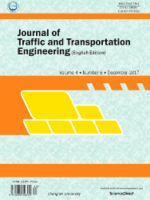
Journal of Traffic and Transportation Engineering-English Edition
Transforming Transportation Through Open Access Scholarship.Journal of Traffic and Transportation Engineering-English Edition, published by KEAI PUBLISHING LTD, is a leading open-access journal that has been disseminating valuable research in the realms of civil and structural engineering, as well as transportation studies since 2014. With a robust impact factor reflected by its prestigious Q1 rankings in both Civil and Structural Engineering and Transportation, this journal stands at the forefront of innovation and scholarship, featuring contributions from experts across the globe. The journal is particularly noted for its practical and theoretical advancements in traffic and transportation engineering, making it indispensable for researchers, industry professionals, and students aiming to deepen their understanding of these critical fields. Dedicated to providing a platform for high-quality interdisciplinary research, the Journal of Traffic and Transportation Engineering embraces the principles of open access, ensuring that all published articles are freely available to foster knowledge sharing and collaboration within the community. With its headquarters located in Beijing, China, the journal continues to push boundaries and set new standards in the field of traffic and transportation research.
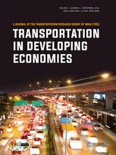
Transportation in Developing Economies
Empowering policymakers with critical insights on mobility.Transportation in Developing Economies is a premier academic journal published by SPRINGER INT PUBL AG, specializing in the interdisciplinary study of transportation systems in developing nations. With an ISSN of 2199-9287 and an E-ISSN of 2199-9295, this journal provides an essential platform for researchers, policymakers, and practitioners to explore the unique challenges and innovations in transportation infrastructure, mobility, and planning within emerging economies. The journal aims to critically assess and promote sustainable transport solutions that cater to the socio-economic dynamics of these regions, making it an invaluable resource for those invested in equitable transportation development. With its open access philosophy, it ensures widespread dissemination of research findings, fostering collaboration and knowledge exchange among scholars and industry professionals alike. As the global focus on sustainable practices intensifies, Transportation in Developing Economies stands at the forefront of vital research, contributing to both academic discourse and pragmatic advancements in the field.

Transportation Infrastructure Geotechnology
Innovating Geotechnical Solutions for Sustainable Transport.Transportation Infrastructure Geotechnology, an esteemed journal published by SpringerNature, serves as a vital platform in the fields of Civil and Structural Engineering, Environmental Engineering, Geotechnical Engineering, and Transportation. Established in 2014 and spanning a decade of significant scientific discourse, this journal has gained recognition for its robust contribution to the understanding of the interplay between geotechnical processes and transportation infrastructure. With an impactful Q2 ranking in multiple categories—including Civil and Structural Engineering and Environmental Engineering—it emphasizes innovative research and practical applications globally. Researchers and professionals can explore critical topics that influence infrastructure sustainability, safety, and efficiency. Although it operates under a subscription model, its affiliation with SpringerNature ensures rigorous peer-review and high-quality publications, making it an indispensable resource for academics and industry experts alike.
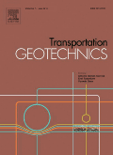
Transportation Geotechnics
Innovating the Intersection of Geotechnics and Transportation.Transportation Geotechnics is a premier academic journal published by Elsevier, focusing on the intersection of geotechnical engineering and transportation systems. With an impressive impact factor and categorized in the Q1 quartile across multiple disciplines including Civil and Structural Engineering, Geotechnical Engineering, and Transportation, this journal stands as a vital resource for researchers and practitioners alike. It covers a broad spectrum of topics ranging from soil behavior in transport contexts to innovative materials and methods that enhance infrastructure stability and performance. As an essential platform fostering knowledge dissemination, Transportation Geotechnics enables contributors to share their groundbreaking findings while providing readers with access to cutting-edge research and reviews from 2014 to 2024. Its illustrious Scopus rankings place it prominently in the global research landscape, making it an indispensable tool for students, professionals, and academics dedicated to advancing the field.

INTERNATIONAL JOURNAL OF AUTOMOTIVE TECHNOLOGY
Exploring New Horizons in Automotive AdvancementsINTERNATIONAL JOURNAL OF AUTOMOTIVE TECHNOLOGY, published by the Korean Society of Automotive Engineers (KSAE), stands as a key platform in the field of Automotive Engineering since its inception in 2000. With an ISSN of 1229-9138 and an E-ISSN of 1976-3832, this esteemed journal aims to disseminate cutting-edge research, innovative methodologies, and advancements in automotive technology. As of 2023, it holds a distinguished Q2 quartile ranking in the Automotive Engineering category on Scopus, featuring a competitive rank of 48/125, illustrating its recognition among peers and the academic community. The journal also enjoys a global readership despite its base in South Korea. Researchers, professionals, and students in the automotive sector are encouraged to contribute to this journal, thus promoting collaboration and knowledge exchange that fosters innovation and progress in automotive engineering. Additionally, the journal is committed to enhancing accessibility of knowledge across boundaries and aims to continue serving as a catalyst for academic growth up to the year 2024.
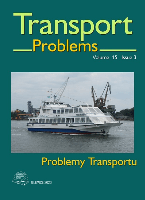
Transport Problems
Advancing the Future of Transportation ResearchTransport Problems, published by the Silesian University of Technology, Faculty of Transport, is a distinguished open-access journal that has been advancing scholarship in the fields of Automotive Engineering, Mechanical Engineering, and Transportation since its inception in 2007. With an ISSN of 1896-0596 and an E-ISSN of 2300-861X, this journal serves as a vital platform for researchers and practitioners to disseminate innovative research findings and explore fundamental issues in transport systems and technologies. Based in Poland, the journal covers various topics including transportation logistics, vehicle dynamics, and environmental impacts, thereby addressing critical challenges faced in the transportation sector globally. As reflected in its Scopus rankings, the journal occupies respectable quartiles and continues to contribute valuable insights to the academic community. By making its content freely accessible, Transport Problems significantly enhances the ability of researchers and students alike to engage with the latest developments in transport engineering and contribute to this ever-evolving field.
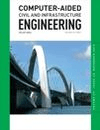
COMPUTER-AIDED CIVIL AND INFRASTRUCTURE ENGINEERING
Pioneering New Frontiers in Civil and Structural EngineeringCOMPUTER-AIDED CIVIL AND INFRASTRUCTURE ENGINEERING, published by WILEY, stands as a leading journal in the domains of civil and structural engineering, computational theory, and computer-aided design since its inception in 1986. With an impressive ISSN of 1093-9687 and E-ISSN of 1467-8667, this esteemed UK-based journal holds a prestigious position in the academic community, reflected by its Q1 ranking in numerous relevant categories, including Civil and Structural Engineering and Computer Graphics as of 2023. The journal is renowned for promoting innovative research that utilizes computational techniques to solve complex engineering problems, making it an essential resource for researchers, professionals, and students alike. Despite its lack of open access options, the journal garners significant interest due to its rigorous peer-review process and high-impact articles, underlining its importance in the advancement of infrastructure engineering practices and technologies. With a Scopus ranking placing it among the top journals in various engineering and computer science fields, COMPUTER-AIDED CIVIL AND INFRASTRUCTURE ENGINEERING continues to foster knowledge and collaboration, ultimately contributing to the future of smart and resilient infrastructure development.

Baltic Journal of Road and Bridge Engineering
Engineering Progress: Your Resource for Cutting-Edge ResearchThe Baltic Journal of Road and Bridge Engineering, published by RIGA TECHNICAL UNIV-RTU, serves as a pivotal platform for disseminating cutting-edge research in the fields of building and construction as well as civil and structural engineering. Established as an Open Access journal since 2006, it fosters global collaboration and accessibility to critical engineering knowledge, facilitating the exchange of innovative ideas among researchers, professionals, and students. With a commendable impact factor and recognition in Scopus rankings, where it stands in the third quartile for both relevant engineering categories, the journal underscores its significance in advancing the discipline. The journal aims to publish high-quality, peer-reviewed articles that address contemporary challenges in road and bridge engineering, making it an essential resource for anyone involved in infrastructure development and research. Located in Lithuania at 6B Kipsalas Street, RIGA LV-1658, this journal not only highlights the latest advancements but also seeks to inspire future innovations in engineering practices.